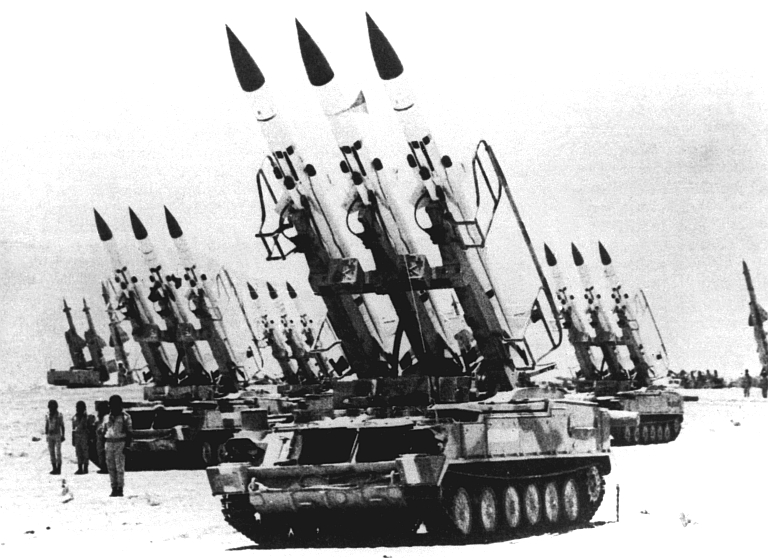
Egyptian SA-6 Units from the 1973 War
The 1973 Sinai War was likely the most precarious conflict in the Arab-Israeli Wars. Much of the battle was supplemented by American and Soviet Cold War technology that matured in the Vietnam War and was used to brutal effect over the deserts of Sinai. Weapons systems like the stationary SA-2 missile and SA-3 missile kept a line of defense for Egypt along the Suez Canal. US Forces were very familiar with the SA-2 as it has caused tremendous damage to American aircraft in the Vietnam War. In Egypt in 1973, ground forces were heavily defended by a new SA-6 missile system, one that was mobile, more technologically advanced and carried more projectiles linked to a mobile radar network. The SA-6s lead Egypt through some of its biggest gains in battle until it was unable to cover ground forces while expanding into the Sinai desert.
The following years lead to techniques and technical improvements in defeating Anti-Aircraft systems, especially the SA-6. Drone technology and other methods to confuse tracking radars overwhelmed many radar system operators and allowed for successful strikes into opposing territories. Various techniques may have recently lead to a Syrian SA-5 missile battery firing on a friendly Russian IL-20 in error as the dated radar system on the SA-5 could not determine the origin of a friendly Russian reconnaissance plane in that incident. More modern systems like the SA-11 BUK that shot down a Malaysian Airlines flight over Ukraine a few short years ago seems to have unintentionally targeted the airliner, and it is still not clear whether or not it was due to an unsophisticated radar or extreme negligence by the crew of the SA-11. With the loss of the 15 member crew of the IL-20, the Russian military in Syria has finally decided to install the S-300 missile system in Syria, a similar system that was sold recently to Iran after many years of sanctions blocking the sale of the advanced missile system to the Iranians.
While the S-300 seems to be under lock and key of Russian forces at the moment, the 49 piece weapons system that include radar units will be up and running in Syria by the end of October according to Russian sources. This means that there will be a few active radars as well as several batteries of missiles, 4 missiles on each unit including equipment to rearm units, linked to the networks of mobile radar units. The effectiveness of the S-300 is a great improvement on that of the SA-5 and SA-6, and it is more likely that the radar would have been able to determine with more accuracy the origin of the IL-20. While a sensible and trained crew is required to avoid another incident like one that occurred with the SA-11 BUK, the use and application of the S-300 units as a political tool could have severe consequences in the region.
One notable effect of the S-300 is that in the wrong hands it could track and likely shoot at aircraft coming from many Israeli air bases, and may even be able to target Tel Aviv’s Ben Gurion Airport as well. The S-300 radar could likely track and shoot into the Mediterranean where many commercial air routes pass through to the Middle East and over Greece, Cyprus and Turkey. While stable relations between all parties in the region and Russia being an assumed inevitability at the moment, it is hoped that more radical elements would not be able to use an S-300 system to increase the likelihood of conflict in the region, especially acts that would target civilians. Memories of the Korean Airlines flight that was shot down in the 80s over Eastern Russia as well as the very fresh memories of the Malaysian Airlines flight shot down by a SA-11 over Ukraine would assume Russian responsibility for any tragic results with these systems in the region. While Mutually Assured Defense may decrease conflict in a region with the application of advanced defense systems, it could also become a tool of horror in the wrong hands.